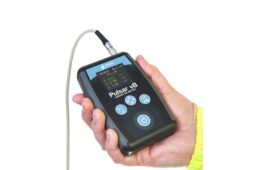To make designing with the sensor easier, best practices and guidelines compiled by the application experts at the sensor manufacturer and other tools can simplify user’s implementation and avoid pitfalls that have been observed in previous system designs. This is certainly true for sensors (transducers) that convert mechanical forces to electrical signals and have mechanical as well as electrical integration challenges.
For example, pressure sensors can be sensitive to mechanical loading. The more sensitive the sensor, the more critical it is to minimize mechanical loading. To assist users designing its FlexiForce flexible printed pressure sensor, Tekscan compiled tips and recommendations for consistent sensor loading, sensor selection, calibration and op-amp circuitry. Among the suggestions for mechanical integration is the use of a load-concentrating puck, sized to cover 70-85% of the sensing area, to improve force transmission. To achieve better resolution and avoid other problems in the application, using a sensor with a lower force range and adjusting the circuit during electrical testing is one of the electrical integration recommendations in the FlexiForce Integration Guide. The guide also suggests different excitation circuitry to achieve high linearity.
For more complex sensors, many companies also provide demo tools, reference designs and more to simplify the integration their product into a final design. For example, for its Franklin Lightning Sensor IC, ams developed a reference design to demonstrate the full capabilities of the lightening detecting device. The fully functional small keychain form factor allows users to easily integrate lightning sensing capability into end products including GPS, weather stations, fish finders, golfing equipment and more. The AS3935 lightning sensor also has a demo kit to explore the capabilities of the sensor.
Filed Under: Sensors (pressure), Sensor Tips





Tell Us What You Think!